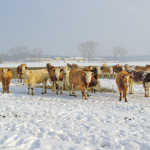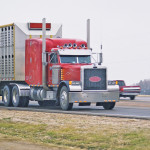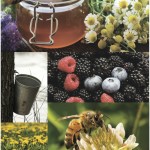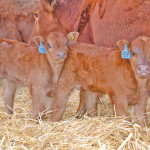
New requirements in place to mitigate pain during specific procedures
Provincial extension veterinarian says the new Code of Practice requirements make calves easier to handle and typically allow faster recovery due to reduced stress levels

Province lifts limitation on pasture insurance
The pasture insurance pilot program that was limited to 90 producers last year is now open to the entire province

Province addresses wildlife predation
Manitoba livestock producers will see an increase to wildlife damage compensation beginning in April

McDonald’s seeks Manitoba producers for pilot project
With the majority of contributions stemming from Alberta, McDonald’s Canada’s verified sustainable beef pilot project is hoping for further participation from Manitoba’s cow-calf producers

Solid gains by cattle sector
Canadian beef producers are producing more beef on less land with fewer animals, all while reducing greenhouse gas emissions

PAMI trials new technology for cleaning swine trailers
Researchers have developed a promising new prototype that has the ability to clean swine trailers more efficiently while maintaining biosecurity standards

Report on wild food industry suggests the need for a co-operative
The Woodlot Association of Manitoba recently investigated the potential to develop a wild food industry in the province’s 2.4 million acres of privately owned wooded land

Research study examines the path of rural innovations
A Brandon research centre believes rural Manitoba contains a wealth of innovation ideas and hopes to create new support services to help residents get their ideas to market

Quality winter feed will promote a more successful calving season, says expert
For strong cows at calving time, MAFRD livestock expert says to focus on the content of winter feed and keep your eye on the thermometer

Bale grazing for a healthier pasture and wallet
Conservation Champions: A Gilbert Plains producer says switching to a bale-grazing system has saved money, labour and created positive changes in pastures


